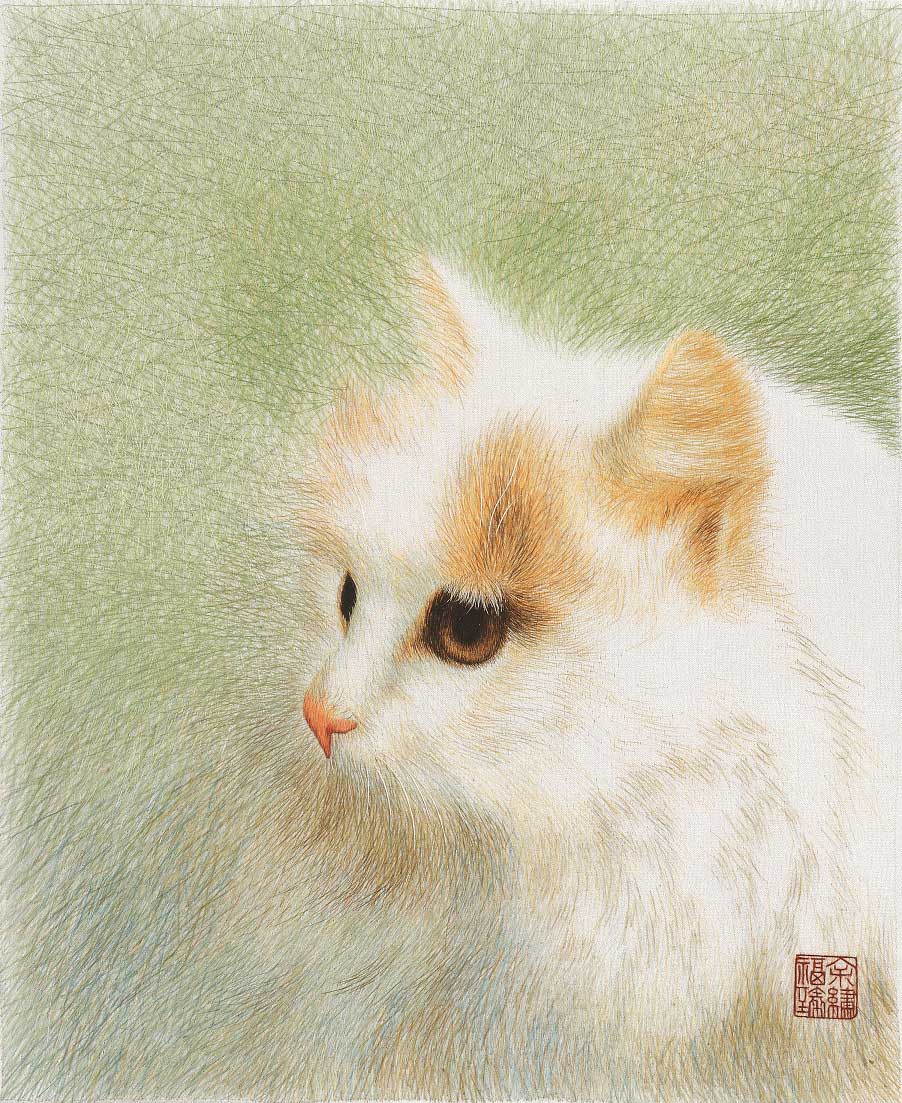Embroidery Archive Exhibition of Hong-Gah Museum 2018 Autumn


Snow Leopard
Snow Leopard
108x92 cm. Snow leopards, the kings of snow, roam in high-latitude mountains with their whitish grey coats and longs tails that are spotted with black rosettes, which help them blend well in the surroundings. This piece is a remarkable combination of embroidery and painting, where the crouching snow leopard on a rock are lively and furrily woven before the painted towering mountains.

Uphill Tiger, Downhill Lion
Uphill Tiger, Downhill Lion
15.5×32×56cm. Embroidered by Hunan Xiangxiu Institute Designed by Shao Chunlin 1982 This double-sided embroidery with different designs on each facade has further challenged the expertise of the artists, as the application of the signature fluffy hair stitching technique of Hunan Embroidery has demanded skills to conceal those numerous stitches. Outlines of the advancing tiger and lion in opposite directions are similarly arranged on both screens, where the head of the ascending tiger and the hip of the descending lion are in line, while the extended paw of the lion is filled in with a jagged rock beneath the tiger. The accomplished artisans have brought most contrasting conversions to these two identical layouts.

White Cat
White Cat
45×35cm. Yu Fuzhen Embroidery 1988 The seemingly chaotic background is actually composed in order through the criss-cross stitching technique, which blend in brilliantly with the contour of the cat. Subtle manners of the cat are delicately delivered, bringing serenity to the eyes of the beholders.

